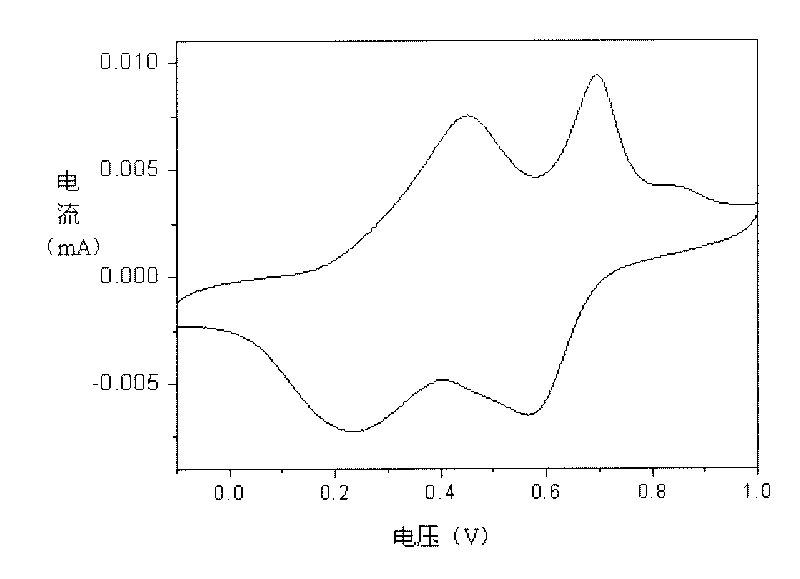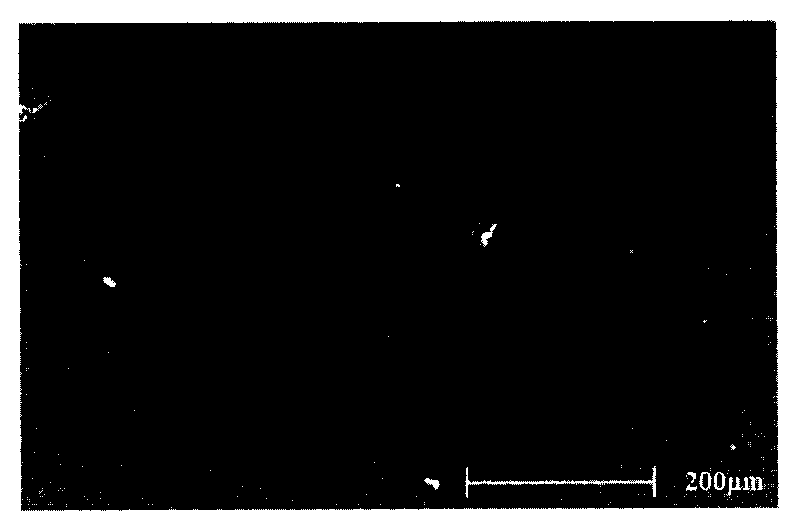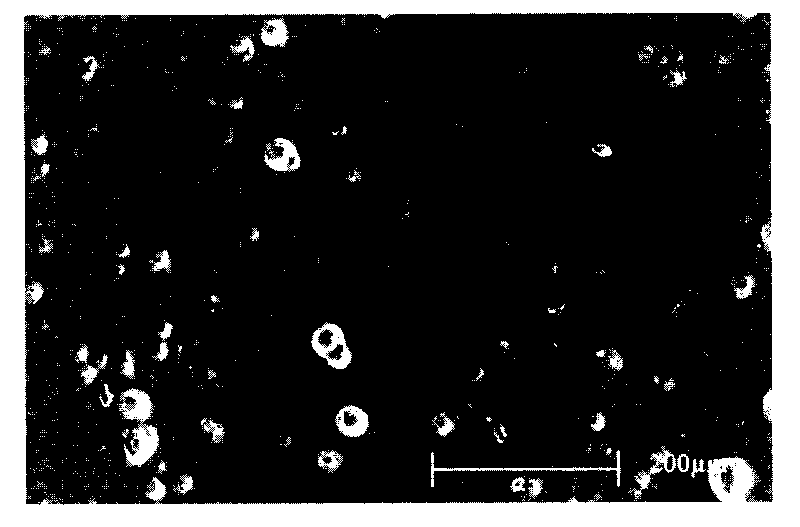Nano-composite material and preparation method thereof used for tissue repair
A nanocomposite material and tissue repair technology, applied in the field of biomedical nanomaterials, can solve the problems of poor mechanical properties, short conjugated structure and limitations of block copolymers, and achieve improved mechanical properties, good biocompatibility, increased active effect
- Summary
- Abstract
- Description
- Claims
- Application Information
AI Technical Summary
Problems solved by technology
Method used
Image
Examples
preparation example Construction
[0037] The invention also discloses a method for preparing a nanocomposite material for tissue repair, including:
[0038] a) dissolving conventional tissue repair materials in a solvent, then adding nano-hydroxyapatite to the solvent, and stirring evenly to obtain a matrix material;
[0039] The conventional tissue repair material is polylactide-glycolide, polylactide or polycaprolactone;
[0040] b) dissolving the block copolymer in a solvent, then adding it to the matrix material obtained in step a), mixing uniformly, settling, removing the solvent, and obtaining a nanocomposite material;
[0041] The block copolymer is a block copolymer of aliphatic polyester and aniline oligomer.
[0042] According to the present invention, firstly, conventional tissue repair materials and nano-hydroxyapatite are used as raw materials, and the raw materials are dissolved in a solvent and stirred thoroughly to prepare matrix materials. The solvent is preferably chloroform. The conventio...
Embodiment 1
[0061] Dissolve 85.9 mg of PLGA in chloroform at room temperature, stir, and slowly add 14 mg of nano-hydroxyapatite after fully dissolving, and fully stir to obtain a matrix solution;
[0062] Dissolving 0.1 mg of a block copolymer of aliphatic polyester and aniline oligomer in chloroform, then adding it to the matrix solution, performing magnetic stirring, ultrasonic oscillation, and settling in absolute ethanol to obtain a solid composite material; Then place it in a fume hood to evaporate the solvent, extract it with a vacuum pump, remove the residual solvent, and prepare a nanocomposite material (PAP / op-HA / PLGA) for tissue repair;
[0063] In the PAP / op-HA / PLGA, the weight percentage of the block copolymer is 0.1%.
Embodiment 2
[0065] Dissolve 85mg of PLGA in chloroform at room temperature, stir, and slowly add 14mg of nano-hydroxyapatite after fully dissolving, and fully stir to obtain a matrix solution;
[0066]Dissolving 1 mg of a block copolymer of aliphatic polyester and aniline oligomer in chloroform, then adding it to the matrix solution, performing magnetic stirring, ultrasonic oscillation, and settling in absolute ethanol to obtain a solid composite material; then Place in a fume hood to evaporate the solvent, extract with a vacuum pump to remove residual solvent, and prepare a nanocomposite material (PAP / op-HA / PLGA) for tissue repair;
[0067] In the PAP / op-HA / PLGA, the weight percentage of the block copolymer is 1%.
PUM
| Property | Measurement | Unit |
|---|---|---|
| degree of grafting | aaaaa | aaaaa |
Abstract
Description
Claims
Application Information
 Login to View More
Login to View More - R&D Engineer
- R&D Manager
- IP Professional
- Industry Leading Data Capabilities
- Powerful AI technology
- Patent DNA Extraction
Browse by: Latest US Patents, China's latest patents, Technical Efficacy Thesaurus, Application Domain, Technology Topic, Popular Technical Reports.
© 2024 PatSnap. All rights reserved.Legal|Privacy policy|Modern Slavery Act Transparency Statement|Sitemap|About US| Contact US: help@patsnap.com










